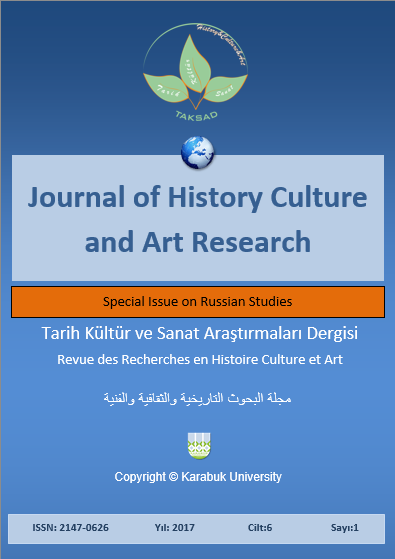The Artistic Functioning of the Concept of "Mountain" in the Works of Russian and Tatar Writers of the Second Half of the Twentieth Century (On the Example of the Works by V. Astafyev and A. Eniki)
DOI:
https://doi.org/10.7596/taksad.v6i5.1304Keywords:
Mythopoetic world picture, Concept, Mountain, Folklore, Tatar literature, Russian literature.Abstract
Studying the key concepts of languages is important for linguistics and literature. In this research, the authors refer to the concept "mountain" in its various modifications, presented in the works of Tatar and Russian writers of the second half of the twentieth century. Some mythological aspects of the implementation of the concept "mountain" are examined in works of Russian and Tatar writers (V. Astafyev and A. Eniki), which are based on mythological and folklore traditions. The authors mark out semantic oppositions "mountain – sky", "mountain - the knowledge of meaning of life"," mountain- basis of life", "life-death", which determine the space-time model of works and the national identity of the authors. At the same time the two authors are similar in the ideological basis of their texts, using popular and mythological invariant of the concept of mountain in its positive connotation, despite the difference of story organization of works. First of all, the mountain marks the basis of life. They are determined by high moral position and integrated with the motive of miracle (through the miracle of love). Although the miracle of love in the works of Astafyev is fragile and cannot stand before the impact of human civilization and the miracle of the appearance of the great-grandson of Eniki (also through the miracle of love) is more earthly and strong.
References
Amineva, V. R. (2017). Symbolization as a way of art completion in the story by A. Eniki "Unvoiced testament". Xlinguae, 10(1), 12-24.
Astafyev, V. P. (1997). Tsar' -Fish. Irkutsk.
Bolgarova, R. M.; Safonova, S. S. & Zamaliutdinova, E. R. (2014). Comparison in Russian and Tatar linguocultures: systemic functional and comparative analysis. Journal of Language and Literature, 5(3), 148-152.
Eniki, A. (1974). Looking at the mountains. Moscow: Sovremennik.
Ibatullin, D. E. (1993). Poetics of prose of Amirkhan Eniki. Thesis on Philology. Institute of Language, Literature and History. Ibragimov Academy of Sciences of the Republic of Tatarstan. Kazan.
Ibragimov, M.; Nagumanova, E.; Khabibullina, A. & Amurskaya, O. (2015). Dialogue and communication in interliterary process (The study of Russian - Tatar literary interconnections of the first half of the XX century). Journal of Language and Literature, 6(3), 137-139.
Madlevskay, E. L. (2006). Russian mythology. Encyclopedia. Moscow: Eksmo.
Nagumanova, E. F. & Galieva, A. M. (2013). Space of the natural world in the original text and the translation (on the material of translations of the original texts of Eniki A. in to Russian language). Philology and culture, 3(33), 98-103.
Nagumanova, E. F.; Gainullina, G. R. & Shemshurenko, O. V. (2017). Tatar national concepts mon and bakhillek in the original text and the translation. Xlinguae, 10(1), 98-108.
Sibgaeva, F. R.; Zamaletdinov, R. R. & Zamaletdinova, G. F. (2015). Reflection of Tatar inner world through concepts. Journal of Language and Literature, 6(3), 115-118.
Smykovskaya, T. E. (2010). The national image of the world in the prose by V. I. Belov. Moscow: Flint publishing house.
Tressider, J. (2001). The dictionary of symbols. Moscow: Fair Press.
Zamaletdinov, R. R. (2012). Tatar cultural linguistics: the concepts of the spiritual world of man. Kazan.
Downloads
Published
How to Cite
Issue
Section
License
All papers licensed under Creative Commons 4.0 CC-BY.- Share — copy and redistribute the material in any medium or format
- Adapt — remix, transform, and build upon the material for any purpose, even commercially.
Under the following terms:
Attribution — You must give appropriate credit, provide a link to the license, and indicate if changes were made. You may do so in any reasonable manner, but not in any way that suggests the licensor endorses you or your use.
- No additional restrictions — You may not apply legal terms or technological measures that legally restrict others from doing anything the license permits.







